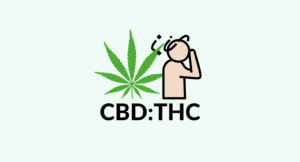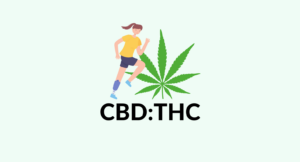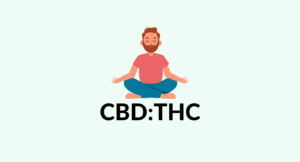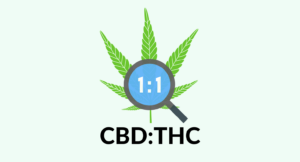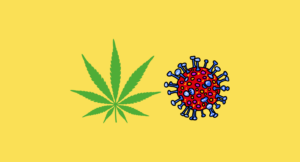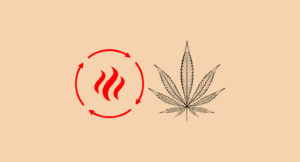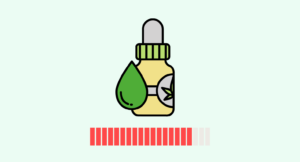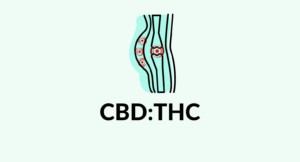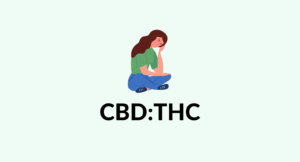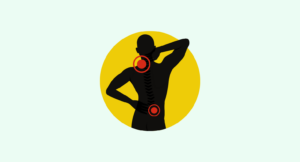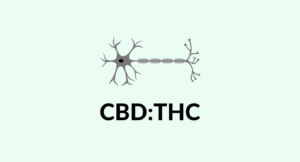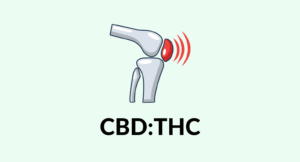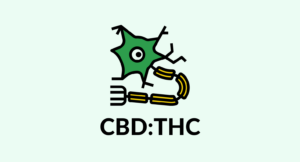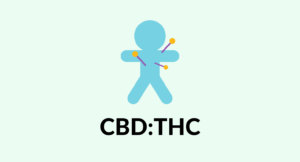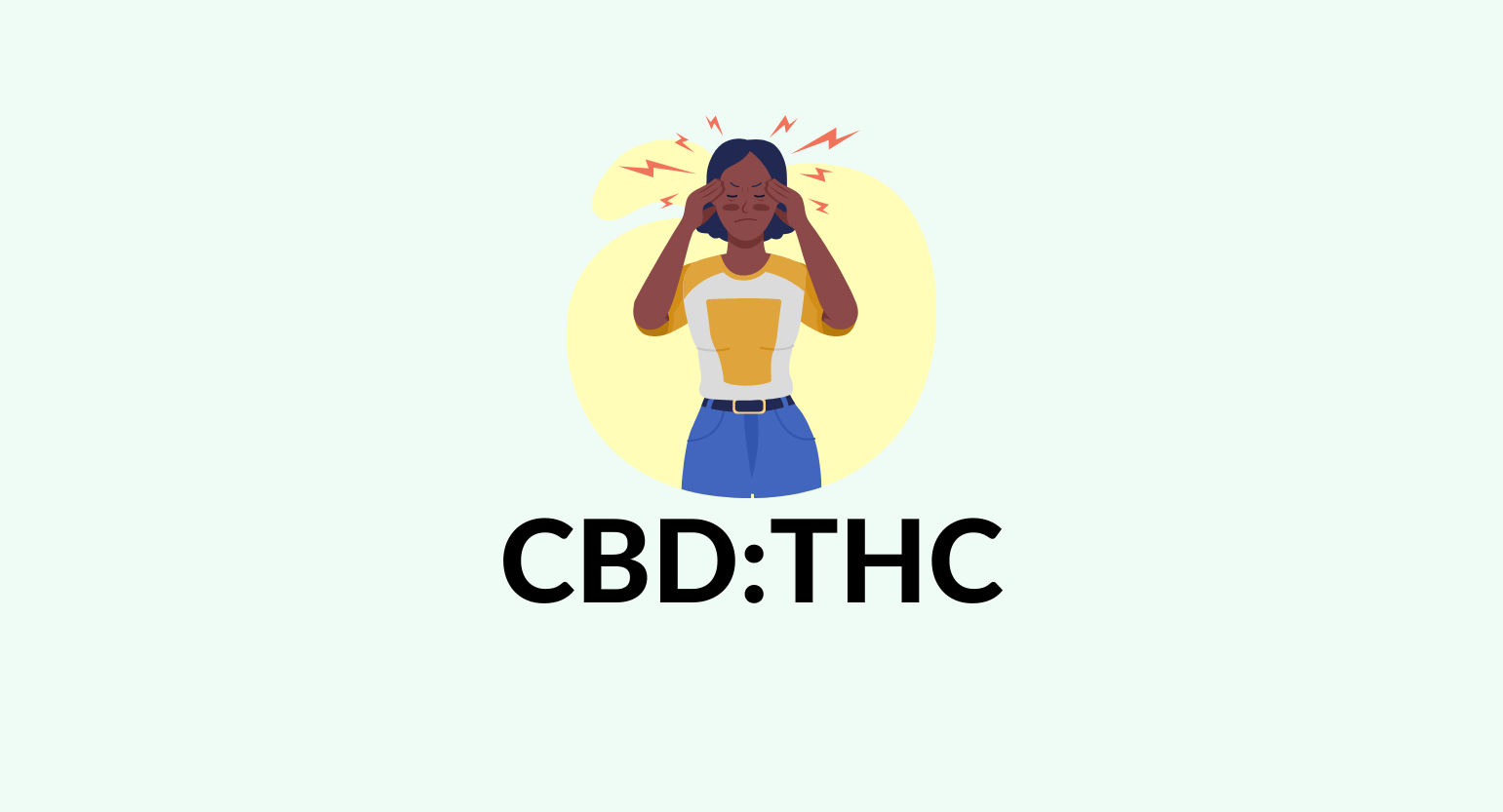
Evidence based
Best CBD:THC Ratio for Migraines
The combination of CBD and THC can be a powerful pain reliever for people with migraines. Here’s all you need to know about CBD:THC ratios for relief from them.
Typical migraine treatments might include triptans, which abort migraines but don’t prevent them, and over-the-counter painkillers like ibuprofen or acetaminophen.
The cannabinoids CBD (cannabidiol) and THC (delta 9 tetrahydrocannabinol) may offer similar relief but with fewer side effects, and some find it more effective than other prescription medications. CBD and THC work together to improve sleep, reduce pain, and potentially reduce the frequency of migraines.
The best CBD:THC ratio for migraines is 1:3+, with one part CBD to three or more parts THC.
Here’s everything you need to know about the best CBD:THC ratios for migraines.
Why Migraines Happen
If you aren’t familiar with migraines, you might not know that they’re quite different from headaches. In fact, some headaches are a symptom of migraines, and not all migraines come with head pain.
Whereas headaches may come from tension in the jaw, a pinched nerve in the neck, or sinus buildup, migraines originate in the brain. Similar to cluster headaches, migraines come from overactivity in part of the brain.
Unfortunately, the reason migraines happen is largely subjective to the individual suffering from them. They might happen due to hormonal changes during menstruation, a change in alcohol consumption, getting too little sleep, low barometric pressure, or any number of reasons.
There is no known reason why certain individuals get migraines and others don’t. As a result, people with chronic (or even occasional episodic) migraines often don’t find treatments that work well for them.
The effects of migraines are dire, even for people who only ever have a few during their lifetimes.
In addition to what can be severe head pain, migraine symptoms include:
- Loss of appetite
- Dizziness
- Light sensitivity
- Sound sensitivity
- Nausea
- Vomiting
- Inability to sleep
For people who deal with this affliction every day, the effects of migraines can easily snowball into a host of other health issues, like not getting enough sleep, food, or exercise.
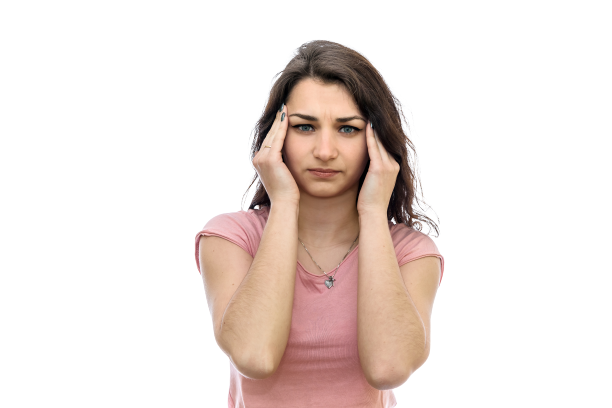
Common Migraine Medications
One reason migraine patients struggle to find adequate treatment is that the source of the migraine can be a puzzler.
For example, if you’re prescribed a triptan like sumatriptan, it’s best to take the medication as soon as you notice a migraine symptom. As abortives, triptans need to be administered early on in the migraine. Too late, and they simply won’t work.
You’ll still be left with the unpleasant side effects, though — severe dizziness, nausea, and sometimes unconsciousness and vomiting.
That isn’t to say patients shouldn’t use triptans. These drugs were created for the purpose of treating migraines, and they work very effectively.
For those who don’t like the side effects of triptans or don’t find them effective, some doctors resort exclusively to pain management. This poses perhaps the toughest part of living with migraines (or any chronic pain), as pain management often becomes a reliance on addictive narcotics for any relief.
People with less severe migraines can use over-the-counter pain medications, like acetaminophen and ibuprofen. Some migraine sufferers find this is enough, but it should be noted that too much acetaminophen can cause issues in the liver and kidneys, including painful stomach aches.
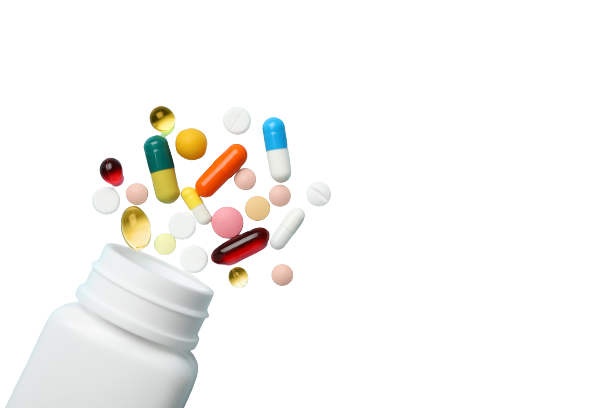
Using CBD & THC for Migraines
CBD and THC are both powerful cannabinoids that can reduce pain and inflammation throughout the body, including the brain.
There is plentiful research backing this claim up, too. Several clinical trials and retrospective studies have proven the effectiveness of CBD and THC (together and separate) in treating migraines [1].
The endocannabinoid system is home to CB1 and CB2 receptors, which activate the body’s response to stress, its dopamine levels, immune system function, and more. CBD interacts with the CB2 receptor while THC interacts with both the CB1 and CB2 receptors, stimulating both to prevent activation of the receptors.
When those receptors are activated, the pain begins. But if cannabinoids get there first, pain can be lowered, the immune system can remain strong, and dopamine can stay in the body.
Similar to triptans, CBD and THC are agonists to the 5-HT receptors. When these receptors are inhibited, the nerves don’t receive the message of pain. Activating the 5-HT receptors may work to prevent future migraines, too.
Some studies also show promise that CBD and THC may reduce the frequency of migraines overall, but more research is needed to prove this [2].
The Best CBD:THC Ratio for Migraines
The best CBD:THC ratio for migraines is 1:3+, with one part CBD to three or more parts THC.
Most migraine sufferers tend to choose very high doses of CBD and THC for pain relief, with 200 mg of cannabinoids total.
Although there aren’t specific ratios for migraines, THC works best for pain when taken in very high doses. When combined with CBD, you’ll experience slightly less psychoactive effects, and you’ll be able to better harness the impact of both compounds.
While CBD works to calm your nervous system and lower inflammation, THC can help you get your appetite back, offer pain relief, and help you sleep better.
We recommend higher doses of THC for migraines, but the best dose is whatever works for you. No amount of CBD or THC should make your migraines worse — although some sufferers describe feeling more aware of pain after getting high.
Taking THC along with CBD should take the edge off of any paranoia or similar psychological effects.
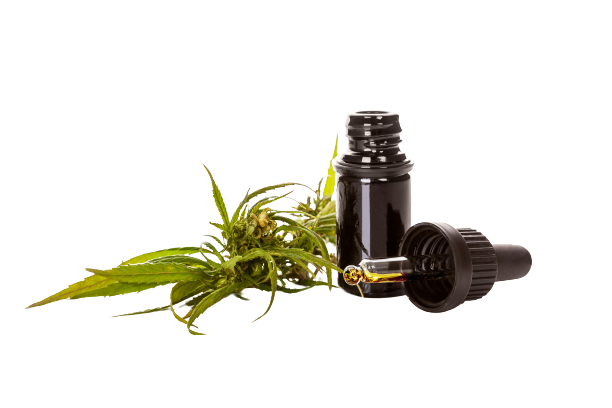
Other Migraine Symptom Remedies
Because the reason for migraines is unknown, they can be tough to treat in a doctor’s office. Here are a few other remedies for migraine symptoms that pair well with your CBD:THC ratio product.
Take Melatonin
Especially if you suffer from poor sleep due to migraines, adding some melatonin to your nightly routine may offer relief. It’s a natural supplement that won’t make you feel high, but might make you a little sleepy, so make sure to take it before bed.
Some scientists believe melatonin deficiencies may be one cause of migraine, while others think it can prevent migraine moreover [3]. Either way, it will help you get to sleep — one of the worst parts of having a migraine.
Take Magnesium
Magnesium is a natural supplement that comes in the form of a pill or capsule. It can help migraine sufferers with aura migraines or menstrual migraines, possibly due to a magnesium deficiency. You can take up to 600 mg of magnesium on a daily basis or during your migraines.
Use Cold Therapy
It might seem like the oldest trick in the book, but there’s real science behind the effectiveness of putting a cold compress on your neck during a migraine [4].
Applying a very cold (ideally frozen) compress to the back of your neck at the start of a migraine may cool the blood passing through the carotid arteries, resulting in lowered inflammation. Although it doesn’t completely abort or stop migraines, it offers significant relief to many patients.
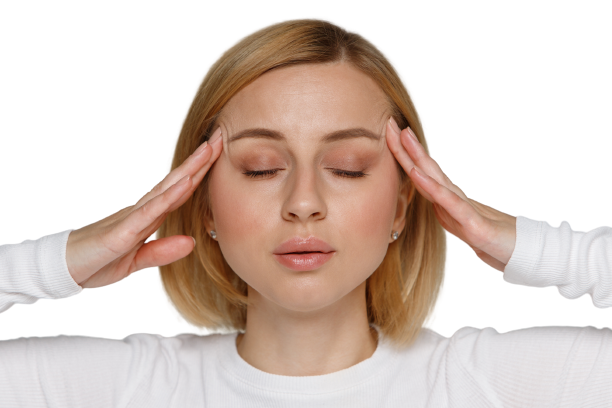
Final Thoughts: Which CBD:THC Ratio Is Best for Migraines?
The best CBD:THC ratio for migraines is 1:3+, with one part CBD to three or more parts THC. That’s because of the great pain-relieving impacts of THC. It’s important to take CBD and THC together, and in high doses, when treating migraines. CBD and THC may also provide a reduced frequency of migraines when taken regularly, but more research is needed.
References
- Poudel, S., Quinonez, J., Choudhari, J., Au, Z. T., Paesani, S., Thiess, A. K., … & Michel, J. (2021). Medical Cannabis, Headaches, and Migraines: A Review of the Current Literature. Cureus, 13(8).
- Aviram, J., Vysotski, Y., Berman, P., Lewitus, G. M., Eisenberg, E., & Meiri, D. (2020). Migraine frequency decrease following prolonged medical cannabis treatment: a cross-sectional study. Brain sciences, 10(6), 360.
- Long, R., Zhu, Y., & Zhou, S. (2019). Therapeutic role of melatonin in migraine prophylaxis: a systematic review. Medicine, 98(3).
- Sprouse-Blum, A. S., Gabriel, A. K., Brown, J. P., & Yee, M. H. (2013). Randomized controlled trial: targeted neck cooling in the treatment of the migraine patient. Hawai’i Journal of Medicine & Public Health, 72(7), 237.
